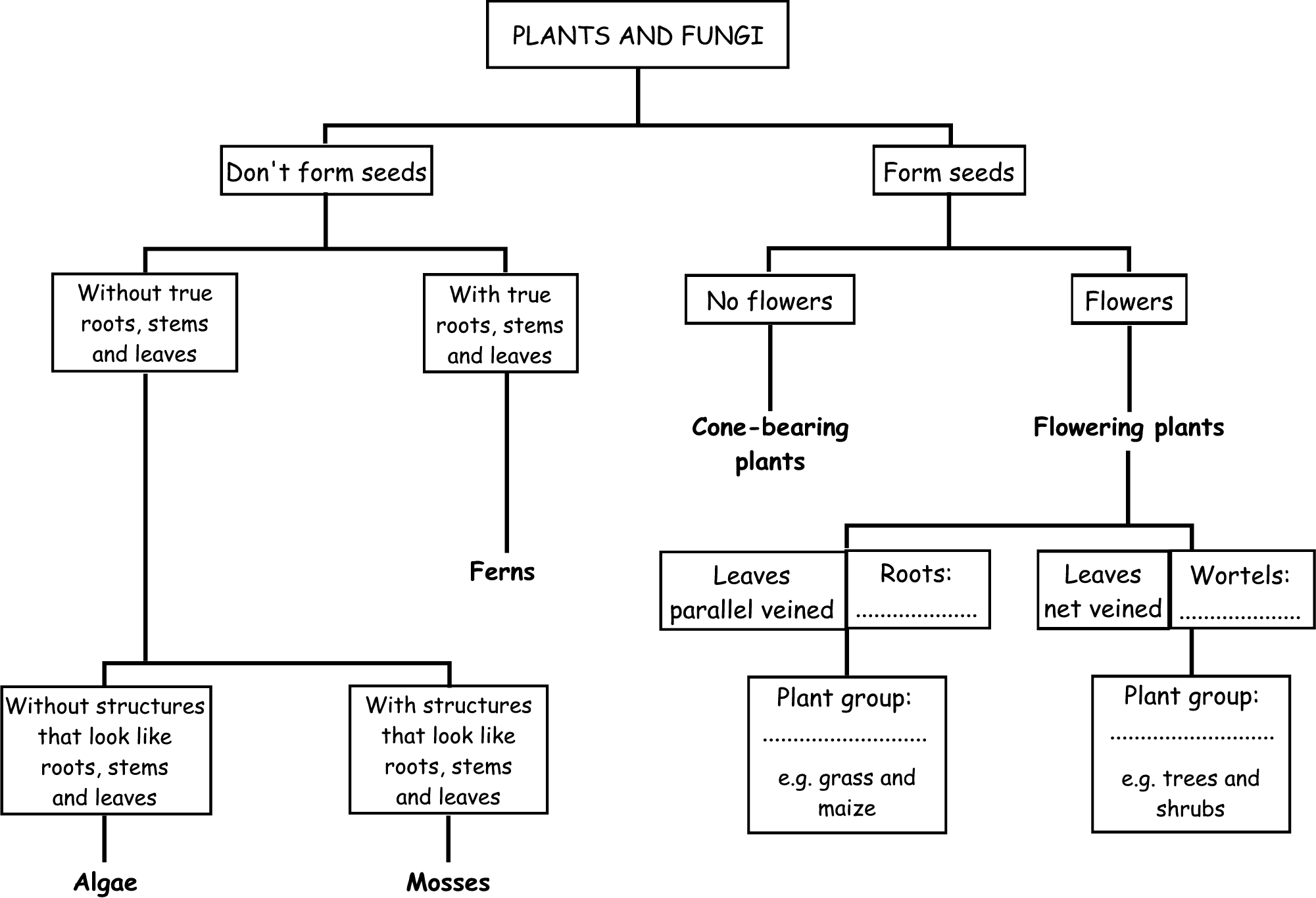| << Chapter < Page | Chapter >> Page > |
1. Equally thick: yes no
Equally long: yes no
Main root: no yes
Branching no yes
2. Taproots: Trees and shrubs, some herbs, climbers. Remaining alive for longer that a year, growing tall (needing an anchor) and/or has to obtain water from deep in the ground.
Adventitious roots: groundcovers and annual plants/plants that remain alive for one year only. Takes up every drop of water, even dew. Does not need to be anchored well to remain upright.
Diagram: Adventitious roots, taproots, monocotyledons, dicotyledons
In Grade 6, you learned that plants could have leaves with different shapes because they are adapted to specific environmental conditions, and that the plants can be divided into groups on the basis of their leaves.
Let us now take a look at the roots of plants.
Study the representations of the two types of roots below (you will make the teacher very happy if you can bring real examples of plants with the two types of roots to class).


1. Try to complete the table by writing yes or no in each block:
| Tap-root system | Adventitious root system | |
| All the roots are equally thick | ||
| All the roots are equally long | ||
| There is a main root that is longer and thicker than the others | ||
| The roots branch (smaller roots grow from the larger roots) |
2. Which of the plants in the sketch of an ecosystem (page 3) do you think will have adventitious roots and which do you think will have taproots? Also say why you think so:
__________________________________________________________________
__________________________________________________________________
__________________________________________________________________
__________________________________________________________________
__________________________________________________________________
__________________________________________________________________
__________________________________________________________________
__________________________________________________________________
__________________________________________________________________
__________________________________________________________________
__________________________________________________________________
__________________________________________________________________
__________________________________________________________________
Do you still remember the division of plants that you did in Grade 6 that is shown below? Use what you have just learned about root systems to add to the division by writing the missing information in the open blocks (ask your teacher to help you):

Learning Outcome 1: The learner will know and be able to interpret and apply scientific, technological and environmental knowledge.
Assessment Standard 1.2: We know this when the learner interprets information.
Learning Outcome 2: The learner will know and be able to interpret and apply scientific, technological and environmental knowledge.
Assessment Standard 2.1: We know this when the learner recalls meaningful information (at least definitions and complex facts);
Assessment Standard 2.2: We know this when the learner categorises information (can compare the properties of categories of organisms);
Assessment Standard 2.3: We know this when the learner interprets information;

Notification Switch
Would you like to follow the 'Natural sciences grade 7' conversation and receive update notifications?